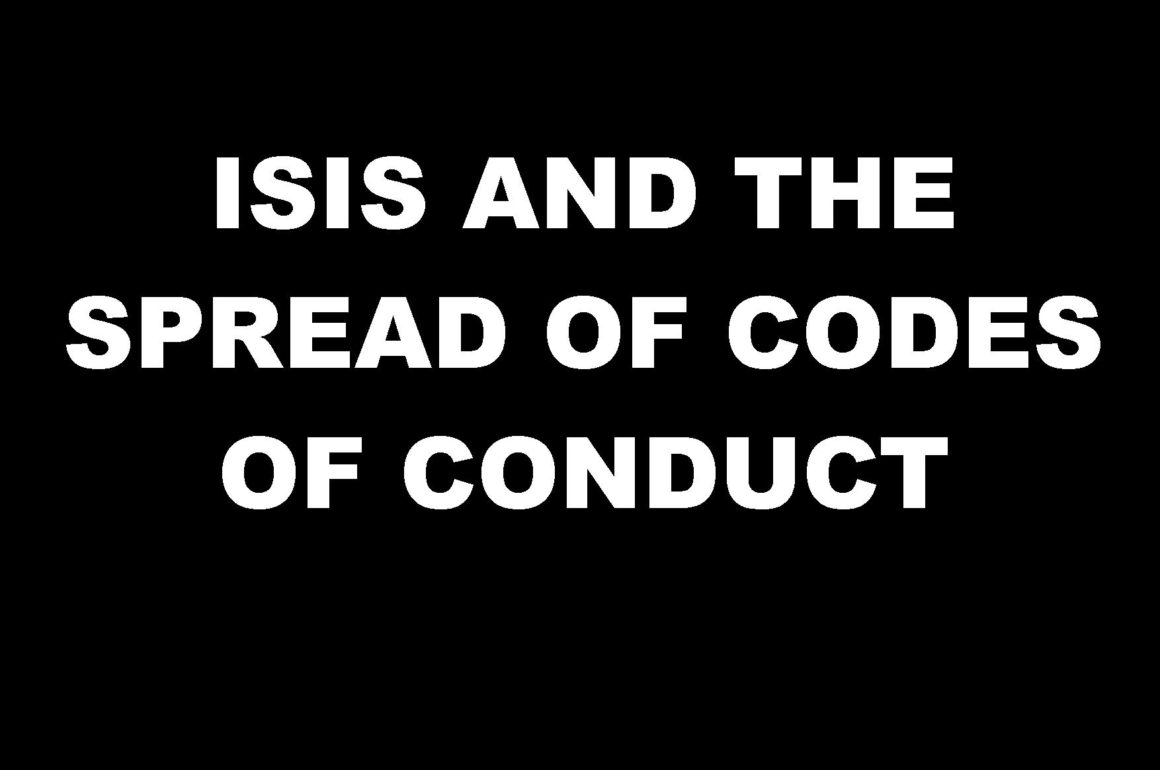
What was the impact caused by the rise of ISIS? How did ISIS influenced popular understanding about jihadism? How ISIS insired other terrorist groups to reaffirm their code of conduct? The article “Jihadists’ Code of Conduct in The Era of ISIS” written by Tore Refslund Hamming from Middle East Institute sheds light on the relationship between the rise of ISIS in post-2013 and the appearance of codes of conduct set up by other terrorist groups. This paper, published in April 2019, focuses on three different groups and their codes: Afghan Taliban, Al-Qaeda in the Indian Subcontinent (AQIS) and Tehreek-Etaliban Pakistan (TTP).
According to Hamming, the understanding of jihadism has changed since the rise of ISIS. The organization’s unusual violence and attitudes made jihadists start reconsidering their own conducts and perceptions. The author mentions that prior to that, the leader of al-Qaeda, Osama bin Laden, in the 2000s had already talked about the need of adapting jihadists´ behavior, adopting less violent approaches. However, when ISIS emerged, it went to the opposite direction and started killing people from the Muslim community who didn´t share their views. Mass executions have also started being live broadcasted on the internet. Spectacles of violence produced by ISIS have contributed to the social imaginary that associates jihadism with extreme violence. People started perceiving terrorist groups as organisations ruled by new codes of conduct known by their violence.
The Afghan Taliban guide is the first one described in the article. The 130 pages code was handed to its members and supporters as a means to ensure the cohesion of the group. The code is based on the obedience to shari’a to guarantee harmony, discipline and unit. There are some differences between this code and the one distributed by ISIS. For example, in Taliban´s code of conduct it is written that prisoners should be respected, even if some of them end up being executed. ISIS members don´t have this rule. Their prisoners were usually brutally killed.
The Al-Qaeda in the Indian Subcontinent’s code was “a reaction to changes in the militant environment resulting from the rise and actions of ISIS”. The guide, which according to the author, is more elaborated than the Afghan Taliban’s focuses on the identification of the enemies that should be targeted. It also mentions the need of protecting some areas from ISIS´s distortion of the meaning of jihad so as to prevent people from associating it with extreme violence. The AQIS’s conduct embraces techniques and strategies in combat, emphasizing the importance in taking care of ordinary Muslim lives, avoiding conflicts in areas where Muslims can be hurt or killed.
With respect to the conduct produced by the Tehreek-Etaliban Pakistan, the striking difference in comparison to ISIS is the existence of rules concerning suicide bombs, which are not advised to be plot in public spaces.
Overall, the article makes an attempt to shed light on efforts made by some terrorist groups to differentiate them from ISIS. Although they may perceive violence in a different way, all of them use the code of conduct as a means to reinforce their position as authorities in conquered areas. In this sense, the “era of ISIS” seems to have been marked by the spread of jihadi organisations that tend to produce specific rules to set the boundaries between them and other groups. A trend that seems to have taken place in the aftermath of ISIS´s emergence.
By Laura Rocha
The full article can be accessed here: https://www.mei.edu/sites/default/files/2019-04/Tore_Jihadi_Code_of_Conduct.pdf




